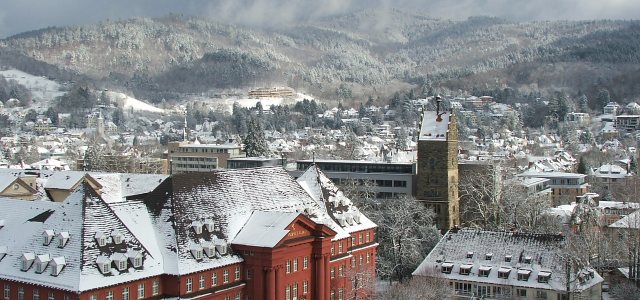As the saying goes, everyone talks about the weather, but no one does anything about it. One grid analyst recently told a German grid operator it was time to take action. Craig Morris investigates.

Sunny Freiburg in Winter – due to passive houses and solar, it actually needs less power than even experts would expect. (Photo by Emily, CC BY-SA 2.5)
Thorsten Zoerner is an IT specialist who serves as an advisor to the German power sector. One day, he decided to put some weather data alongside some local power data. He ran the numbers, noticed an anomaly, and contacted his colleagues at the local grid operator to call for a meeting. “There’s something wrong with the load profile model you are using.”
The message drew a lot of attention, and when Zoerner looked across the room at the beginning of the meeting, he recognized everyone except an elderly man he had never seen before – and the man had a skeptical look on his face. “We need to take better account of two things,” he began, “and they are both related to high pressure areas in the winter.”
Grid operators use a standard load profile to forecast power demand. In the winter, a high-pressure area generally means clear skies and low temperatures. Freezing temperatures increase demand for heat. In France, for instance, where electric heating is relatively widespread (around 20 percent of households), power demand can double during cold spells. While Germany gets less than six percent of its space heat from electricity, the uptick in power demand is nonetheless clearly noticeable.
“The town of Freiburg now has quite a few Passive House buildings,” Zoerner explained his first point to the grid experts. “On a clear day, however, the sunlight that enters such homes suffices to heat the building even at freezing temperatures. These homes only need active heat on cold, cloudy days, such as when it is snowing, even though temperatures are then not the lowest.” In other words, the load profile model used by the grid operator overestimates power demand on the coldest days without clouds in towns with a lot of Passive House buildings.
Proper forecasting is crucial, especially as the share of wind and solar power increases. If demand is lower than expected, you have to get rid of power somehow, generally by ramping down plants. But that option costs money. So does the other one: if demand is higher than expected, plants need to be ramped up, and usually rapid-response generators are then employed instead of cheaper, but sluggish baseload plants.
The grid experts were thus highly interested in Zoerner’s first point, and they occasionally interrupted to ask a quick question. But the whole time, the elderly man remained quiet – and he seemed to look more skeptical with each passing minute. Zoerner began to get nervous; he was certain of his data, but had he overlooked something?
“The second thing is PV power production,” he continued. You see, the efficiency of solar cells drops as temperatures increase, generally by around 0.4-0.5 percent per degree Celsius. In return, PV is more efficient when it’s cold. Panels in sunny Arizona produce a lot of power because so much sunlight is available, but when they heat up in the summer, they become much less efficient. In return, a solar panel on a cool April day in Colorado doesn’t heat up so much; it might not get quite as much sunlight as it would in Arizona, but it makes more electricity out of what it gets. In other words, twice as much sunlight does not lead to twice as much solar power.
“On these cold, but sunny days in Freiburg, the model underestimates how much solar power is generated,” Zoerner explained, “and grid lines are also cooler, so they are able to transport a lot more power without losses.” The result, he told his audience, is a widening gap between the load profile model and the real world. During a winter high-pressure area, Freiburg consumes less and produces more electricity than expected.
Zoerner was about to add that Freiburg is not alone. Other towns within the same transmission grid, such as the city of Heidelberg, also have entire districts with Passive House architecture, and PV has been built everywhere. But before he could finish making that point, the elderly man raised a finger and finally spoke: “You are absolutely right,” he said, his voice revealing that skepticism had turned into excitement. “This is exactly what we’ve been seeing, but we weren’t able to say why.”
Craig Morris (@PPchef) is the lead author of German Energy Transition. He directs Petite Planète and writes every workday for Renewables International. Thorsten Zoerner blogs in German at Stromhaltig and is a member of Energieblogger, a German blogging community for the Energiewende.
Hi Craig, nice article! I think the method of storytelling is great for energy bloggers. And still a lot of technical information is transportet.